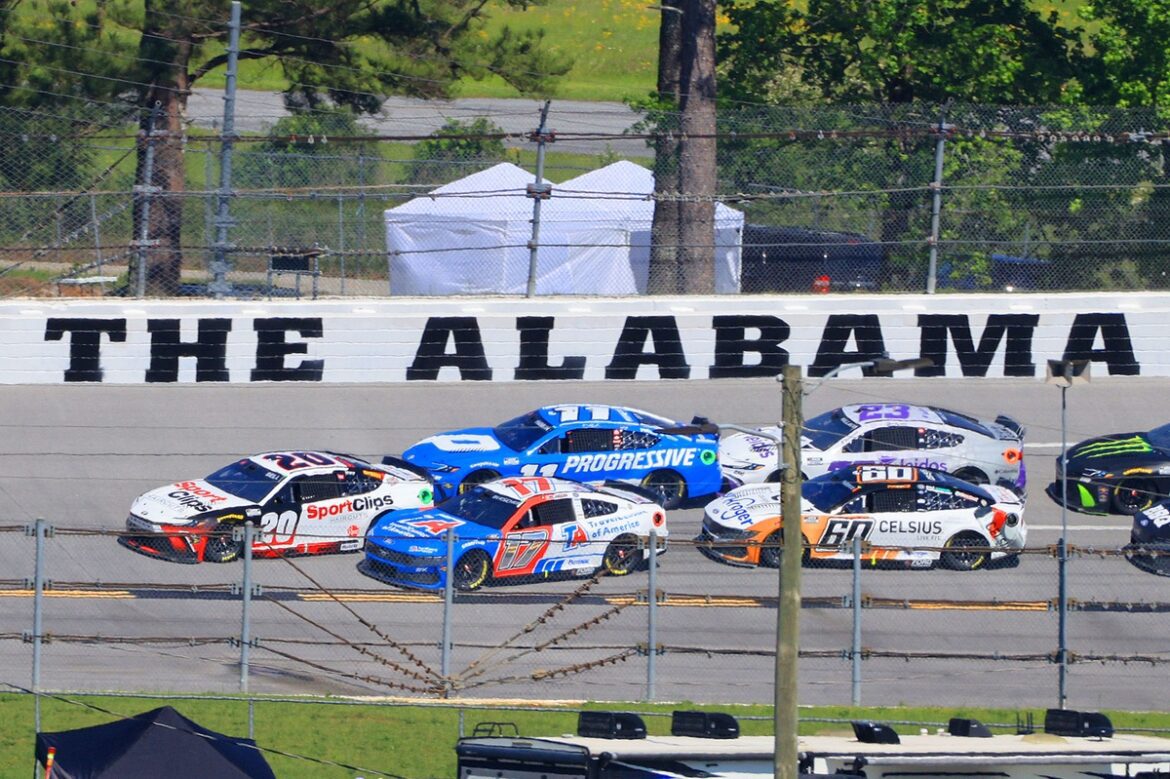In the world of NASCAR, safety is always a top priority, especially after incidents that highlight potential hazards on the track. A notable event occurred during the summer of 2023 at Daytona International Speedway, where Ryan Preece experienced a terrifying wreck that led to a swift reaction from NASCAR officials. In the aftermath, the organization made a significant decision to eliminate the grass from the entire backstretch of the superspeedway to enhance safety measures.
While the race at Talladega did not see any drivers flip over, it still witnessed a dramatic crash involving Christopher Bell and Chris Buescher. The incident unfolded during a mid-race restart, right at the exit of Turn 2. Bell’s vehicle collided forcefully with the inside wall, resulting in extensive damage to the front of his No. 20 Joe Gibbs Racing Toyota. Although Buescher’s crash appeared less severe at first glance, he later communicated the pain he felt from the impact over the radio. This particular area of the wall is known for its unique design; it angles toward the track to provide space for emergency vehicles that need quick access during incidents.
Even though the drivers were not at full speed when the crashes occurred, the severity of the impacts was alarming. Notably, Bell’s crash was not an isolated event; other drivers had faced similar challenges in that specific section of the 2.66-mile superspeedway. Fortunately, both Bell and Buescher received medical evaluations at the infield care center and were cleared to return to the race.
In a recent episode of the NASCAR podcast “Hauler Talk,” Amanda Ellis, the sport’s senior director of racing communications, discussed the necessary adjustments to the wall at Talladega. She emphasized that changes would be made before NASCAR’s return to the track later in the year for the playoffs. “That wall will be adjusted or essentially corrected before we return in the fall,” she stated. The modifications will involve removing the jutting lip and straightening the wall, as well as making improvements to another area of the track.
Mike Forde, who serves as the managing director of racing communications for NASCAR, expanded on Ellis’s comments. He pointed out that the current wall design acts as a “wreck magnet.” The area has seen numerous collisions, which raises concerns about the safety of the drivers. The wall’s presence is primarily due to an access road located behind it, where emergency vehicles are stationed to respond quickly to incidents on the backstretch.
Forde explained the geometry of the wall, noting that it currently sits at a five-degree angle, which may even be steeper. The plan is to modify it into a straighter edge, which should help mitigate the severity of wrecks in that area. “That’s one of those things that we’re going to fix over the summer,” Forde assured listeners. When NASCAR returns to Talladega in October, fans and drivers can expect to see the updated wall design, aimed at improving safety.
The changes to the wall and track layout are part of NASCAR’s ongoing commitment to ensuring the well-being of its drivers. Safety advancements have been a focal point for the organization over the years, with continuous assessments of track conditions and driver feedback playing crucial roles in shaping safety protocols. The swift response to the crashes at Talladega exemplifies how NASCAR takes incident reports seriously and strives to enact changes that protect its athletes.
Fans of NASCAR understand that while the thrill of racing is a significant part of the sport, the safety of the drivers must always come first. The community rallies around the competitors, acknowledging the risks they take every time they hit the track. The crashes at Talladega serve as a reminder that even in the high-speed world of NASCAR, safety measures must evolve to keep pace with the sport’s demands.
As NASCAR prepares for future events, the adjustments made to the Talladega wall will likely set a precedent for how the organization handles similar issues in the future. By addressing potential hazards on the track, NASCAR not only protects its drivers but also reassures fans that every effort is being made to keep the sport as safe as possible.
The commitment to safety in NASCAR is not limited to just the physical structures of the track but also extends to the technology used in race cars. Innovations in safety gear, helmets, and car design have all contributed to a safer racing environment. Each year, NASCAR works closely with engineers and safety experts to analyze data from races and incidents, ensuring that lessons learned are incorporated into future designs and safety protocols.
In the end, the narrative surrounding the crashes at Talladega highlights a broader theme within NASCAR: the relentless pursuit of safety in a high-octane sport. As the organization continues to evolve and adapt, it remains dedicated to protecting those who participate in this exhilarating competition.
With each race, drivers and crews are faced with the unpredictable nature of racing, but knowing that safety measures are being prioritized helps build confidence among competitors and fans alike. As NASCAR gears up for its upcoming events, the modifications to the Talladega track will serve as a testament to the sport’s commitment to safety and the ongoing dialogue about improving conditions for everyone involved in the thrilling world of NASCAR racing.
